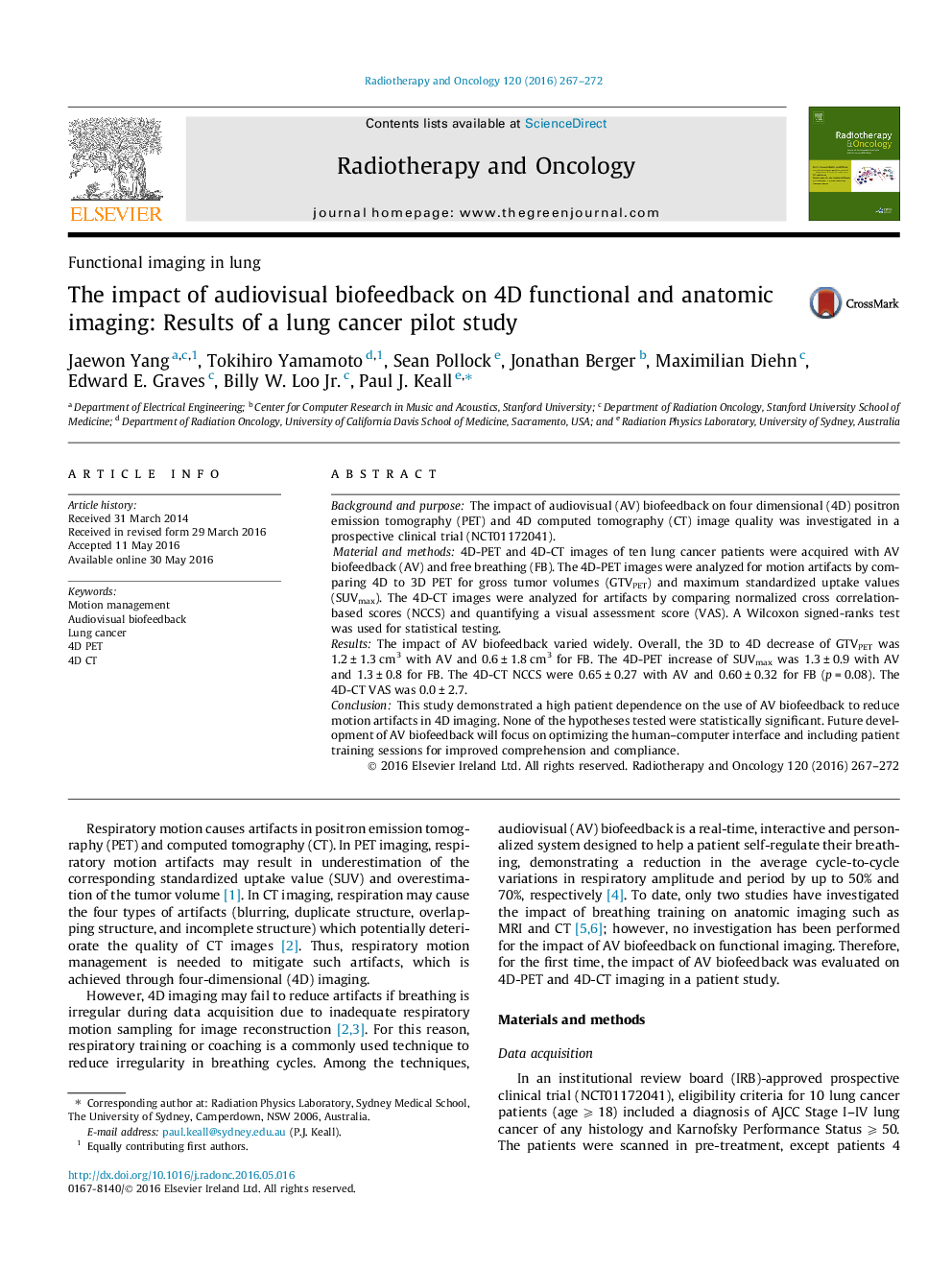| Article ID | Journal | Published Year | Pages | File Type |
|---|---|---|---|---|
| 5530027 | Radiotherapy and Oncology | 2016 | 6 Pages |
Background and purposeThe impact of audiovisual (AV) biofeedback on four dimensional (4D) positron emission tomography (PET) and 4D computed tomography (CT) image quality was investigated in a prospective clinical trial (NCT01172041).Material and methods4D-PET and 4D-CT images of ten lung cancer patients were acquired with AV biofeedback (AV) and free breathing (FB). The 4D-PET images were analyzed for motion artifacts by comparing 4D to 3D PET for gross tumor volumes (GTVPET) and maximum standardized uptake values (SUVmax). The 4D-CT images were analyzed for artifacts by comparing normalized cross correlation-based scores (NCCS) and quantifying a visual assessment score (VAS). A Wilcoxon signed-ranks test was used for statistical testing.ResultsThe impact of AV biofeedback varied widely. Overall, the 3D to 4D decrease of GTVPET was 1.2 ± 1.3 cm3 with AV and 0.6 ± 1.8 cm3 for FB. The 4D-PET increase of SUVmax was 1.3 ± 0.9 with AV and 1.3 ± 0.8 for FB. The 4D-CT NCCS were 0.65 ± 0.27 with AV and 0.60 ± 0.32 for FB (p = 0.08). The 4D-CT VAS was 0.0 ± 2.7.ConclusionThis study demonstrated a high patient dependence on the use of AV biofeedback to reduce motion artifacts in 4D imaging. None of the hypotheses tested were statistically significant. Future development of AV biofeedback will focus on optimizing the human-computer interface and including patient training sessions for improved comprehension and compliance.
